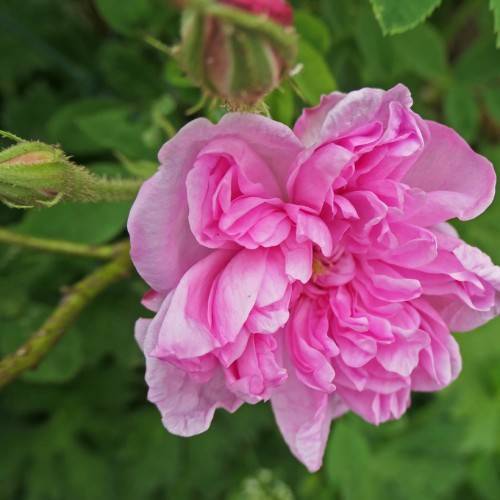
damask rose
Rosa 'Omar Khayyam'
Cycle:
Perennial
Watering:
Average
Hardiness Zone:
4 - 9
Flowers:
Flowers
Sun:
Full sun
Leaf:
Yes
Growth Rate:
High
Maintenance:
Moderate
Drought Tolerant:
Yes
Salt Tolerant:
Yes
Thorny:
Yes
Care Level:
Medium
watering
Damask roses require regular watering in order to thrive. Water the soil deeply and slowly at the base of the plant, being careful not to wet the foliage. During the first few months after planting, it's important to water regularly. In general, water at least once or twice a week. Once established, water every other week, or as needed during extended dry periods. If the soil around the rose feels dry to the touch 2 inches below the surface, it's time to water again. During hot weather, water more frequently. Avoid splashing too much water onto the foliage of the plant, as this may increase the likelihood of powdery mildew or other fungal diseases.
sunlight
Damask rose (Rosa 'Omar Khayyam') needs at least 5 to 6 hours of direct sunlight each day, and prefers full sun conditions if possible. A sheltered, south-facing spot with a high level of sunlight is ideal. Be aware though that too much sun can cause sunburn on the petals of the rose, reducing its lifespan. When summertime temperatures are extreme, provide some indirect shade during the hottest part of the day. Additionally, it is best to avoid direct exposure to afternoon sun, as this can cause stress on the plant.
pruning
Damask Rose (Rosa 'Omar Khayyam) should be pruned in late winter or early spring. Pruning the plant will encourage strong, disease-resistant growth and give the plant better air circulation. Pruning can be done by removing any dead, diseased, or damaged stems, as well as any shoots growing inward instead of outward. To keep the plant at the desired size and shape, keep pruning away no more than 1/3 of the overall canopy. Removing too much foliage may cause stress to the plant and reduce the amount of flowers it produces.
